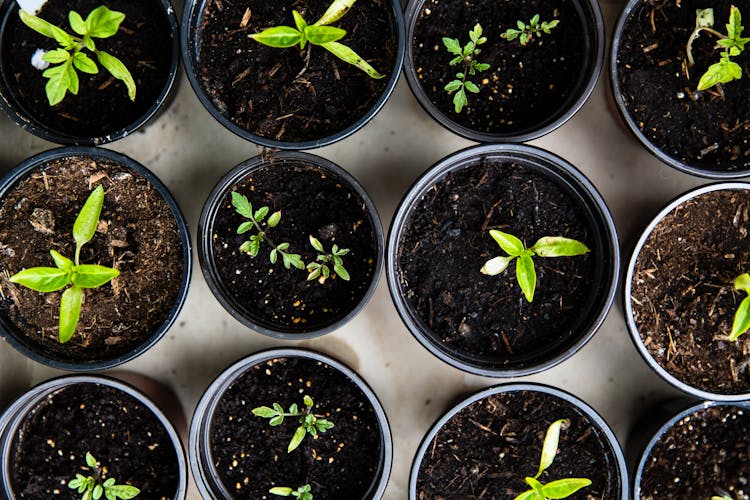5 vegetables you can easily grow in a pot
Do you dream of owning a big garden to grow your own vegetables? Consider growing veg in pots instead – you may be surprised at the variety of veggies that can thrive in containers.

You can practise indoor vegetable gardening anywhere – on a windowsill, on a driveway, a balcony or wherever you can place a hanging basket. And vegetable garden planters can help you maximise limited garden space.
Growing veg in pots is low maintenance, height-adjustable, kid-friendly and quicker to harvest. Veggies in pots are also portable – ideal for trying out different spots in the house, or if you’re renting and will move in the future.
How to grow vegetables in a pot
Some plants thrive in loads of sunlight, while others prefer the shade. Some veggies drink up humidity, while others want to bake in dry heat. First, figure out where you’re going to grow your vegetables. Then when you visit the garden centre, you can pick the best plants for your space.
Check seed packets for each plant’s growing requirements and choose veggies you’ll want to eat. When picking out pots for your seeds, make sure they offer enough drainage. Buy containers with drainage holes ½-1 inch in diameter, or drill or carve in more holes later.
The more compost you use in your containers, the more water they’ll retain. This means even if you accidentally don’t water or feed your plants enough, they’ll be less likely to dry out. The best compost for vegetables is a good peat-free, multi-purpose mixture. Enrich it every week or two with a liquid fertiliser or slow-release fertiliser granules.
What is the best vegetable to grow in a pot?
There isn’t just one easy veg to grow in a container – there are many. It also depends on the growing conditions, however. And some vegetables fare a lot better being grown in a pot than others.
Some of the easiest vegetables to grow in containers are in the nightshade family – for instance, potatoes, tomatoes and peppers. Fast-growing crops like peas, radishes and salad leaves are also great choices.
When growing vegetables in pots, look for those that:
- Need less space to thrive
- Don’t grow very large roots – for instance, climbing plants like peas or beans
- Don’t require fast drainage
- Produce a high yield
- Can be tastier if they’re harvested when young and small
Not all of these conditions need to be met to produce a successful harvest. Simply use them as pointers to help you decide which vegetables to grow in pots.
How to grow tomatoes in a pot
While most tomatoes are happiest in big pots, you can still grow them with limited indoor space. Buy a small variety, like cherry or plum, and plant them in a smaller container. If you’ve bought tomato seeds from the cordon variety, as they grow, you’ll need to buy or make a supportive tomato cage. This prevents the heavy fruit from breaking the vines. To produce a shorter, wider plant more suited to small pots, opt for a bush variety.
Sow your tomato seeds from late February to early April for a late summer harvest. Fill small pots with compost and water well. Sow seeds on the surface of each pot, then cover with a little more compost. Keep the pots on your warmest windowsill and, once seedlings appear, place in as much light as possible. After a couple more weeks, transplant the seedlings into individual pots, holding them by the leaves rather than the delicate stem.
Drainage is especially important for tomato plants. They love sunlight – a sunny spot on the windowsill is ideal. Water regularly and keep the compost evenly moist. Once fruits start to appear, feed every 10-14 days with a liquid fertiliser high in potassium.
How to grow peas in a pot
Peas grow quickly. They don’t need a large pot but you’ll need to make a wigwam shape from bamboo garden canes for them to climb. Choose a dwarf or bushier variety of pea if you want to avoid this – although the plants may need bigger pots when they grow outwards instead.
Sow anytime between February and June for a crop around four months later. Sow your seeds about 7.5cm apart in small pots or modular trays filled with compost. As they grow larger, separate them and transplant each seedling into a pot of its own.
Keep peas in a spot where they’ll get as much sunlight as possible – a well-lit balcony would be perfect. Water regularly to keep the soil moist, especially once your plants are flowering. Keep picking the well-filled pea pods to encourage new fruiting. Once your pea plants have finished producing, plant something else in the same soil – it’ll now be enriched with plant-nutritious nitrogen.
How to grow herbs in a pot
Most herbs are very well-suited to indoor vegetable gardening as they prefer the heat. Herbs are also useful to have on the kitchen windowsill while you’re cooking. Great candidates for small pots are basil, parsley, coriander, oregano, chives and mint. You could also grow more obscure herbs like tarragon, chervil or sage.
Some herbs take a long time to germinate or they’re slow-growing, such as thyme, rosemary, bay and oregano. You may prefer to buy these as plants instead. Select small pots for your seeds, with adequate drainage and a saucer sat under each one. Almost fill each pot with compost, then sprinkle a few seeds into each – being careful not to get herb varieties mixed up. Cover by sprinkling with compost and water thoroughly.
You’ll probably be harvesting herbs within a month – just place them in a sunny spot for quicker growth and keep the soil moist. Take from them little and often, using scissors to cut off a handful of leaves at a time. Cut off bigger leaves first and don’t leave stems bare.
How to grow potatoes in a pot
Potatoes are well-suited to growing in containers, which also help protect against the spread of fungus. Choose any variety you like and harvest them sooner if you only have limited space – they’ll taste sweeter then, too.
Potatoes are grown from specially-selected ‘seed potatoes’. Leave your dry seed potatoes out in a cool, bright place. Once they’ve grown short, strong shoots, half-fill your pots with compost. Submerge the potatoes with the shoots facing upwards. When leaves later emerge, cover those with more compost. Repeat the process until the pot is full.
Plant your seed potatoes between March and May to harvest in late summer. Potatoes love the sun, but will make do with partial shade. Water them regularly. Pull the potatoes out of the ground after the flowers have died.
How to grow carrots in a pot
Although growing carrots is known to be a little difficult, that’s not the case when they’re sown in pots. Carrots need free-draining, stone-free soil, or they can struggle to form their shape. Planting them in compost provides the ideal growing space. Unless you have deep vegetable growing boxes, choose a shorter variety of carrots like Chantenay or Nantes.
Fill your pots with compost and press the carrot seeds a few centimetres deep, covering the holes you make. Thin out your seedlings before they get too big or you’ll only grow tiny carrots. Instead of pulling them out, cut the stems with scissors so you don’t disturb the roots of the other plants.
Carrots prefer cool temperatures, so keep them away from radiators and direct sunlight in the house. Use a fertiliser that is low in nitrogen. Water them semi-regularly to stop roots from drying out and cracking. Reduce the frequency of watering as they reach maturity, and carefully check under the soil for when you want to harvest them.

